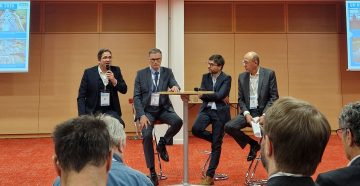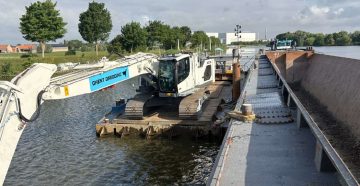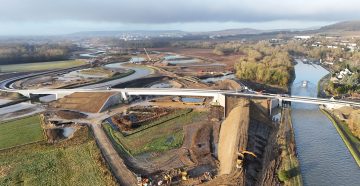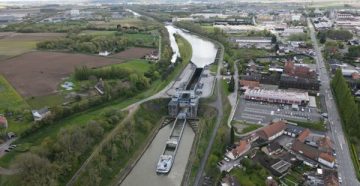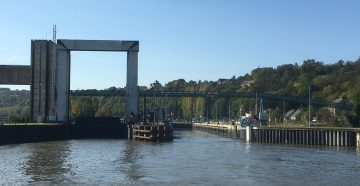The project of lengthening the Quesnoy-sur-Deûle lock, located on the Deûle-Lys axis is part of the Seine-Scheldt European river network. It is essential for allowing large-gauge barges to access this major economic route for river freight.
The aim of the project, supported by Voies navigables de France (VNF, a member of Seine-Scheldt EEIG), is to extend the lock by 34 meters. While the locks in the Nord-Pas de Calais region are all 144.6 metres long, the Quesnoy-sur-Deûle lock is only 110 metres long. The aim is therefore to remove a bottleneck on the Deûle, the most important waterway for inland waterway traffic in Nord-Pas-de-Calais, and to absorb the traffic increases expected with the deployment of the Seine-Scheldt network and the future Seine-Nord Europe Canal. According to Olivier Matrat, VNF’s acting territorial director for Nord-Pas-de-Calais and manager of the Seine-Scheldt EEIG, “traffic on the Deûle could double by 2040 to 12 million tonnes transported“.
Following the work carried out in 2021 and 2022 on the lock garages improvements, work to extend the lock began in August 2023 and will last for 3 years. The first phase, currently under way, involves adding sheet piles and booms upstream and downstream to extend the lock. From September 2024, fish passes will be created (on the right bank) and an eel pass (on the left bank) to enable species to travel safely up the Deûle. The project also aims to optimise water resources: the installation of a pumping station and maintaining the intermediate gate (the current downstream gate) will reduce the volume of water needed for boats to pass through. Lastly, the lock will be modernised and prepared for remote control, by refurbishing the buildings and the control station.
The extended lock and all the associated works will be commissioned by the end of 2025.
The total cost of the project is €43 million, financed by VNF, the European Union (as part of the Connecting Europe Facility CEF 1 and 2), the Transport Infrastructure Funding Agency (AFIT) and the Region Hauts de France (as part of the CPER State-Region Plan Contract).
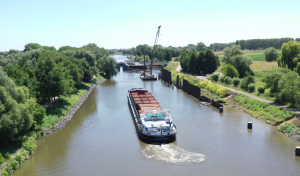
Copyright@VNF

